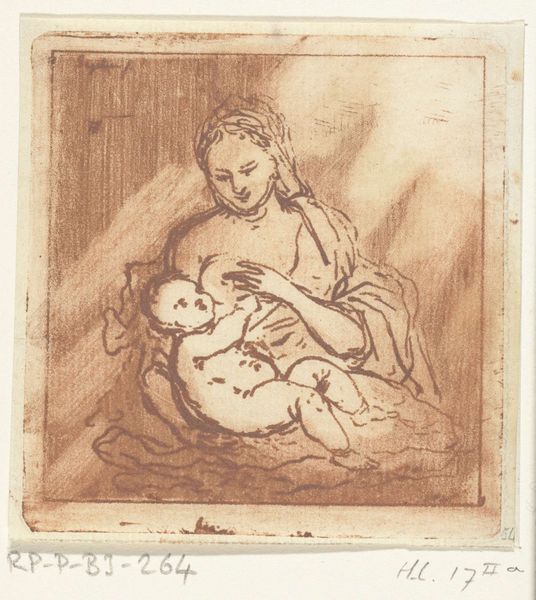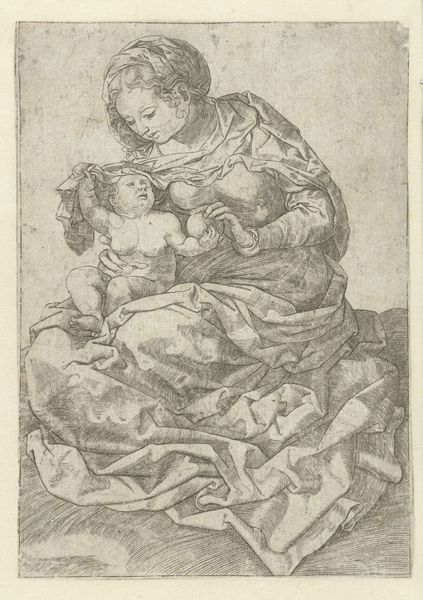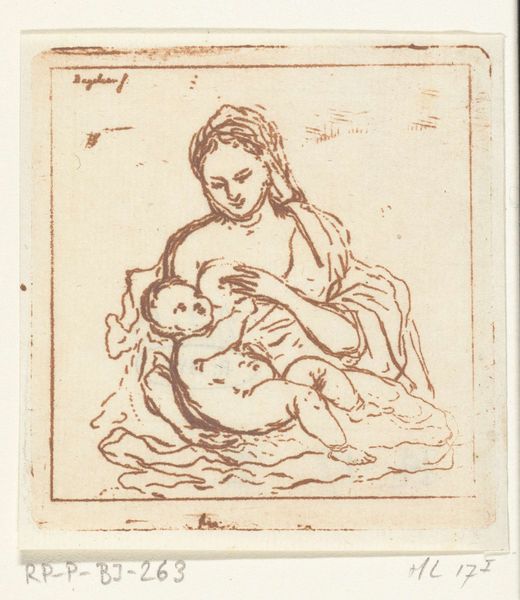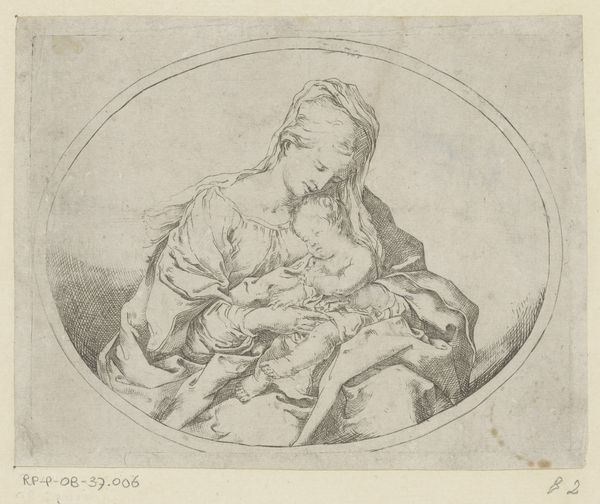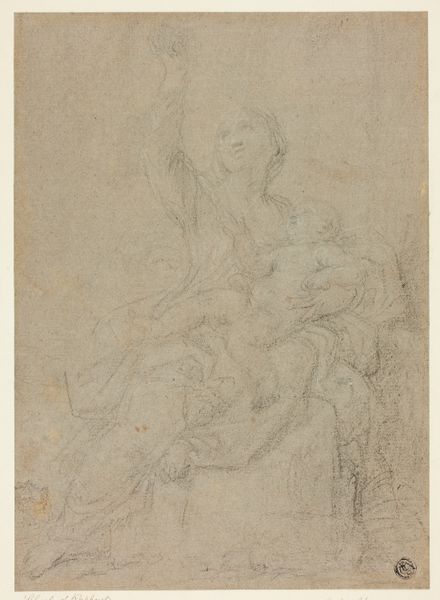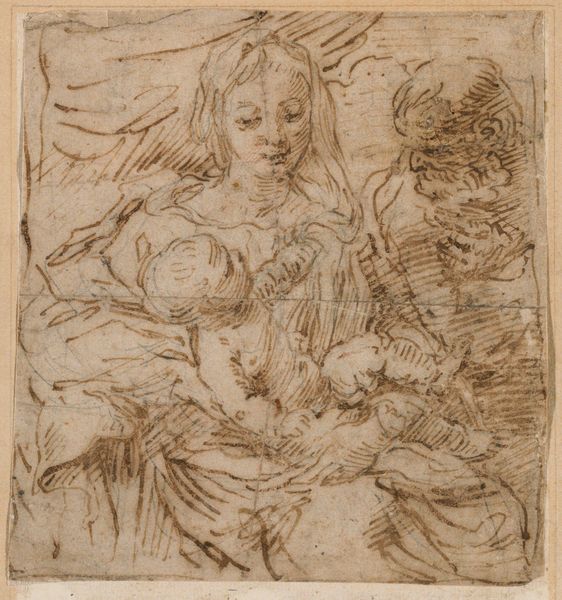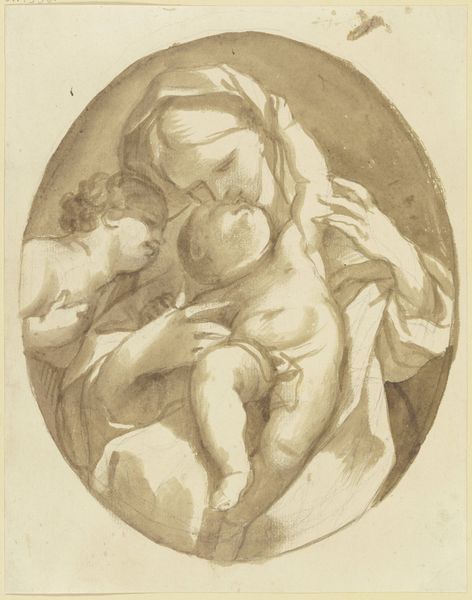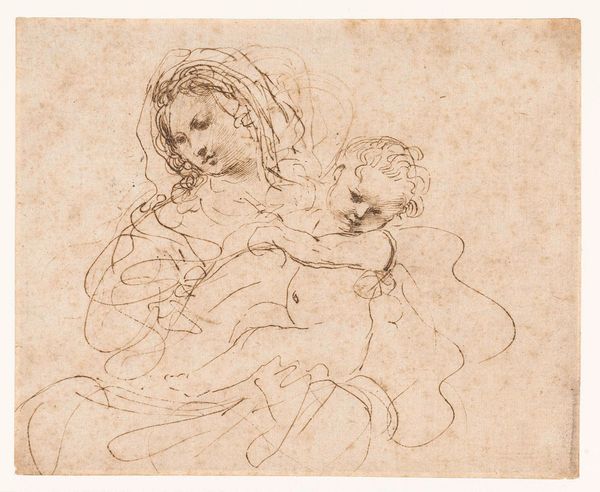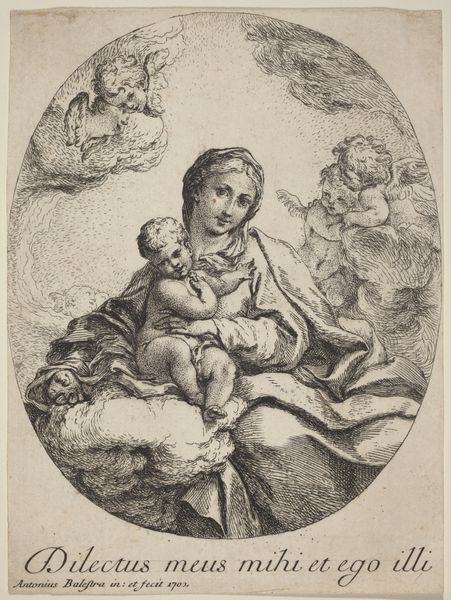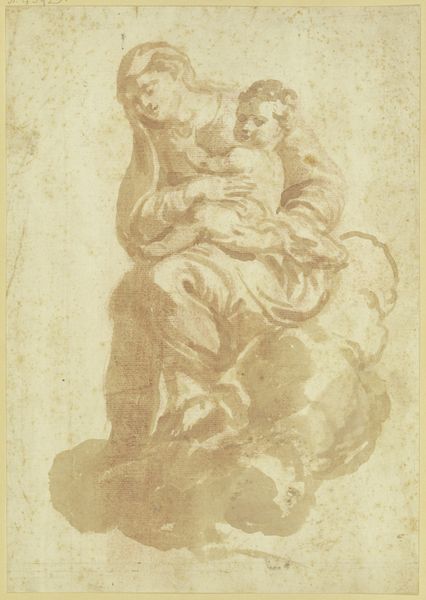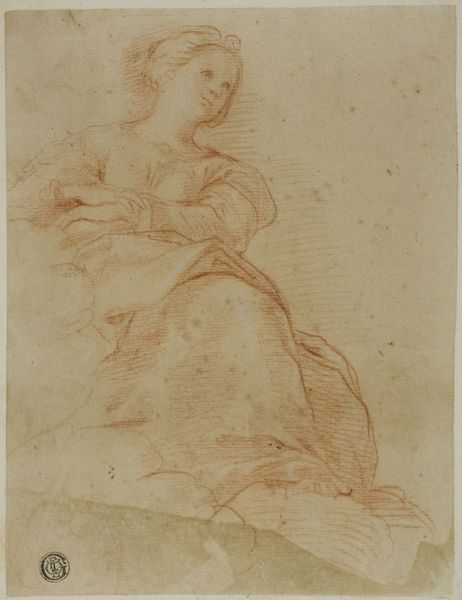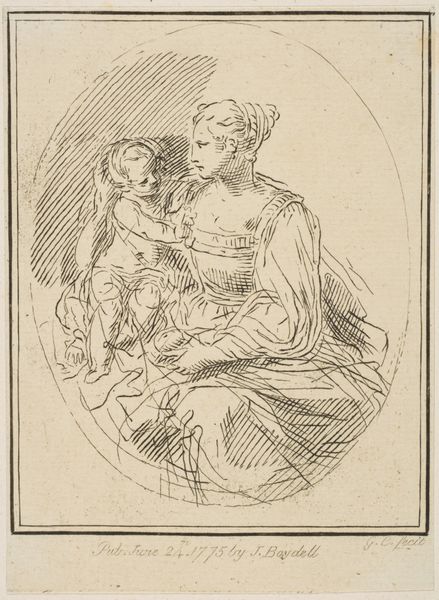
drawing, paper, pen
#
portrait
#
drawing
#
neoclassicism
#
etching
#
figuration
#
paper
#
pen
Dimensions: height 75 mm, width 72 mm
Copyright: Rijks Museum: Open Domain
Editor: This is "Maria geeft Christus de borst," or "Mary breastfeeding Christ," by Ernst Willem Jan Bagelaar, created sometime between 1798 and 1837. It's a pen and ink drawing on paper in the Neoclassical style, and I’m immediately drawn to the intimacy it portrays. How do you interpret this work through a modern lens? Curator: The choice to depict Mary breastfeeding is not merely a sentimental one; it's a potent symbol of maternal power and nourishment, defying the historically patriarchal structures that often control depictions of women and the divine. Editor: Can you elaborate on that a little bit more? Curator: Think about the era in which it was created. Neoclassicism often romanticized the past, but here, breastfeeding becomes a visual declaration of a woman's essential role, a radical move for the time. Mary isn’t just a passive vessel; she actively sustains the future savior. It speaks volumes about the potential to reclaim female agency. Editor: I see what you mean. By depicting this very physical act of motherhood, Bagelaar empowers Mary beyond the purely spiritual. Does the Neoclassical style have a bearing on that interpretation? Curator: Absolutely. The clarity and simplicity characteristic of Neoclassicism bring forth an almost tangible sense of humanity. Stripped of baroque ornamentation, what remains is the unvarnished reality of a mother’s nurturing act. Where might that direct your thoughts? Editor: I hadn't thought of it that way. I was initially drawn to the gentle mood, but your interpretation gives the artwork a stronger voice. Curator: Art is inherently political, wouldn't you agree? By acknowledging the socio-historical context, we bring into focus those power dynamics at play. We unveil their profoundness. Editor: Definitely. This piece speaks to me now on so many levels. Thanks for that expanded understanding.
Comments
No comments
Be the first to comment and join the conversation on the ultimate creative platform.
